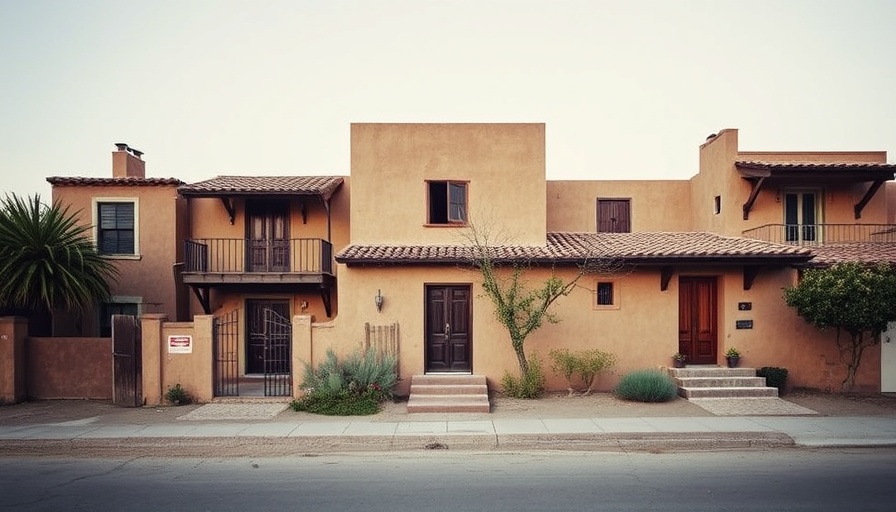
Discovering the Essence of Mexican Architecture
In his meticulous exploration of Mexico's architectural identity, photographer Edmund Sumner brings forth ten remarkable houses that transcend conventional design. His newly published book, Casa Mexicana, not only showcases stunning visuals but invites us to think critically about the cultural narratives embedded within these structures. Sumner's work offers digital nomads, a group keen on nurturing effective and aesthetically gratifying workspaces, a glimpse into how architecture can shape our living and working environments.
Rich Contexts and Rooted Designs
Sumner’s selection of homes is striking for their deep connections to the environment—from dense jungles to cliff-side vistas. These homes, often described as "brutal yet deeply rooted", serve as backdrops for not just personal lifestyles but also as creative hubs for artists and thinkers. In an era dominated by fleeting trends, it encourages the establishment of workspaces that celebrate authenticity and the rawness of their materials.
The Harmony of Tradition and Modernity
One of the compelling aspects of Mexican residential architecture, as Sumner shared, is how it effortlessly combines traditional craftsmanship with contemporary aesthetics. Digital nomads, who often juggle various roles from home offices to collaborative workshops, can take inspiration from this duality. It demonstrates how a space can embrace both structure and openness—a vital characteristic for fostering productivity and creativity.
Case Studies: Innovative Homes That Inspire
1. **Plantel Matilde, Merida, by Arcadio Marín**: More than just a residence, this expansive retreat designed by sculptor Javier Marín serves as a sanctuary for creators. It showcases bold forms and monumental solidity, standing as a testament to the idea that living spaces can be both functional and artistically profound. For digital nomads, it serves as a reminder that one's workspace can be uniquely personal and imbued with the surrounding environment.
2. **Casa Reyes, Mexico City**: This artistic haven, engineered by artist Pedro Reyes and designer Carla Fernández, merges creative vibrancy with living experience. From the sculptural staircases to the stone bath, it illustrates how residential architecture can enrich everyday life for its occupants. For remote workers, this encapsulates the need for spaces that fuel inspiration and collaboration, fostering an atmosphere where ideas can flourish.
Valuable Lessons for Your Workspace
The principles illustrated by these homes can profoundly influence how digital nomads design their workspaces. Essential factors include:
- Integrating Nature: Emphasizing natural light and organic materials can lead to a psychologically beneficial workspace that fosters innovation and well-being.
- Flexibility: Just as these homes are adaptable to their environments, consider designing your workspace to accommodate various activities, whether it’s focused work or collaborative sessions.
- Personal Touch: Embedding your identity into your workspace can create a more inviting atmosphere that encourages productivity.
Moving Towards a 'Primal Future'
Sumner captures a vision of architecture that resonates deeply with its cultural origins while boldly embracing the future. This balance holds a crucial lesson for digital nomads: technology and tradition can coexist harmoniously, crafting spaces that bolster productivity while remaining true to their roots. Such insights help create not only functional workspaces but also environments that inspire and energize.
Conclusion: Crafting Inspired Workspaces
As we absorb the vivid imagery and narratives behind these contemporary Mexican houses, let's reflect on the ways their design philosophies can enhance our own workspaces. By infusing personal style with natural elements and honoring the interplay of legacy and innovation, we can transform our environments into sources of inspiration and well-being. So, as you plan your next workspace renovation, think about how to incorporate the lessons learned from Mexico's rich architectural heritage.
 Add Row
Add Row  Add
Add 




Write A Comment